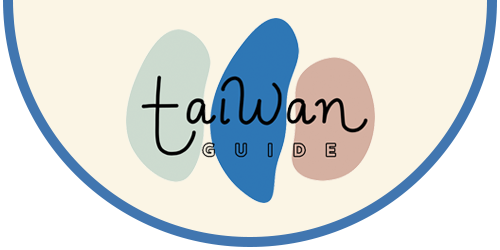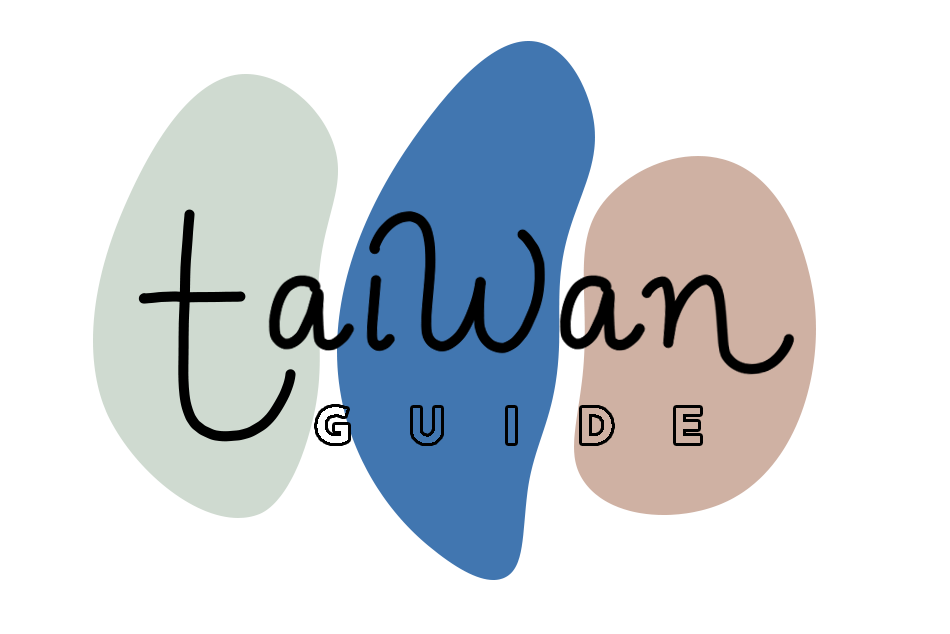// CENTRAL TAIWAN 中部 // NANTOU 南投 //
weekend trip:
sun moon lake 日月潭
a serene escape into the mountains of central Taiwan
Sun Moon Lake is the biggest body of water in Taiwan. Its name is derived from the shape – apparently one side is round like a sun while the other is crescent-shaped like the moon. Perched up in the mountains in Nantou, the lake has an ethereal beauty to it whether graced by fog or reflecting the colors of a sunset with layers of mountains beyond.
The temperate climate that makes it a popular summer getaway for outdoor activities, and it’s the perfect escape – just far away enough to feel transported, but easily accessible enough to get back into the city by Sunday night. Whether just to spend time walking and biking around the lake or making an extended trip with detours to aboriginal villages, historic kilns and high mountain tea, Sun Moon Lake is a great day trip for central Taiwan and weekend trip from Taipei (or southern Taiwan).
GETTING HERE
The easiest way to get to Sun Moon Lake without a car or a full on tour group is from Taichung. There are buses that’ll take you to the lake from Taipei, but it’s faster to take the high speed rail or normal train mountain line to Taichung and then grab a 1-2 hour bus from there. The HSR from Taipei takes about 45min to 1hr and will set you back 700NT or about $23, with up to a 35% discount for booking early. Normal express trains take 90 min to 2hrs and tickets go for about 300-400NT or $10-13.
From the main bus and train stations in Taichung, there are plenty of buses and cabs that will take you straight to the lake. Buses from Taichung to the lake have one-way tickets for 189NT ($6). Some, like the tourist shuttle also have routes around the lake and surrounding points of interest as well. They have various passes available, starting at 450NT (~$9). There are also all-in-one day trip tours from Taichung, with full transportation included for 1850NT (~$63) per person.
Once you’re there, plan on spending a night or two in the area to make the most of the excursion. There are dozens of hotels big and small around the area from intimate bed and breakfasts to 5 star hotels, as well as campsites and hostels. If you’re feeling particularly luxurious, check into a hot springs resort.
THINGS TO DO
If you take an early morning train from Taipei, you’ll probably get to Sun Moon Lake by mid-afternoon. Once you’re here, things are really tourist friendly. Check in and drop off your bags before heading to the nearest visitor’s center (Xiang Shan 向山 on the west side, Yi Da Shao 伊達邵 on the south side, and Shui She 水社 on the north side are the main ones). There, grab a one-day pass (80NT ~$2.50) for the hop-on-hop-off bus that goes around the lake.
If you’re just here for a day trip, forgo a true itinerary and spend the day walking around the lake and exploring the points of interest around its perimeter. If you’re staying for a weekend, consider building in some side trips to various cultural and heritage places nearby.
DO: walk or bike around the lake
SEE: Ci En Pagoda
Constructed by Chiang Kai Shek in memory of his mother, this 46 meter pagoda is perched up on Shabalan Mountain. While the structure itself is, as one reviewer puts it, “distinctly average,” it remains a popular spot for the views. A well-maintained trail leads up the hill and visitors can climb to the top of the pagoda for 360 views of the lake.
PLAY: Formosan Aboriginal Culture Village
If you’re traveling with kids, carve out a few hours for Formosan Aboriginal Culture Village (850NT ~$30 for adults, 650NT ~$22 for children). It’s part amusement park, part museum, part European garden (don’t ask). The Aboriginal Village Park features 9 areas representing 9 different aboriginal tribes. There, you can experience traditional performances and dances as well as participate in hands-on cultural activities. The park especially popular during February / March for cherry blossom season. Note that FACV tickets also include the Ropeway (cable cars), which can be a scenic way to leave the park (it drops off at the Sun Moon Lake station by Ita Thao).
SEE: Wen Wu Temple
Come early to beat the busloads of tourists at WenWu Temple. Built during Japanese occupation to replace two smaller temples, the Confucian temple overlooks the lake from the northern shore. Buy a wind chime at the temple and write your name and wish on it. Then, go down to the “Year of Steps” (366 steps for each day of the year), find your corresponding birthday step and hang the chimes. There are also shaded trails behind the temple for hiking and Song Bai Lun Natural Park nearby for a waterfront view.
Catch the views from the Ropeway
Speaking of which, the Ropeway itself is a popular attraction. The 10-minute ride connects Ita Thao/Yi Da Shao on one end by the lake and the Formosan Aboriginal Culture Village up in the mountains with . Tickets are 300NT (~$10) per person, with discounted tickets for seniors and children. Weekday hours are 10:30-16:00 and weekends are 10:00-16:30 and ticketing starts and ends half an hour before opening and closing times respectively.
DRINK & MAKE some tea at a tea farm
Some of the best Taiwanese teas come from the high mountains in central Taiwan. Many of these tea farms are open to visitors and some of them even let visitors get involved in the tea-making process from hand rolling the leaves to drying them out and personalizing the packaging, the interactive and DIY experiences are great for the whole family. Many of them also have associated tea houses or restaurants to sit down and enjoy tea tastings and provisions.
GET CRAFTY with some side trips
While you’re in the area, it’s popular to take side trips to the neighboring townships to get a taste of real Taiwan. These small towns are isolated enough to feel quaint and old-timey, but close enough to easily make some detours.
Pu Li Township 埔里
Pu Li is right north of Sun Moon Lake that is home to the official geographic center of Taiwan. It’s become a popular tourist stop for locals and families, with several commercial attractions.
- 廣興紙寮 Kuang Hsing Paper Mill – a former paper factory that is now a cultural center that preserves the art of paper making in a town where the industry used to thrive, with interactive tours and DIY projects to try your hand at paper-making.
- Taiwan Fruit 果寶歡酵 – 觀光工廠 – a mini museum and shop specializing in fermented fruit drinks and vinegars
- Paper Dome Ecological Park – a minimalist modern chapel originally built for survivors of the 1995 Kobe earthquake, made from waterproof paper, a popular spot for photos.
- The Stele of Taiwan’s Geographical Center – a monument that marks the official center of the island
- Taomi Riverside Park – a family friendly park with water activities and plants.
- Feeling 18 – a popular “European” style chocolate specialist
Shuili Township 水里
Shuili, which literally translates to “in the water,” is a small, rural town just south of Sun Moon Lake. The sleepy town is surrounded by mountains and has a lot of hidden little gems among the hills.
- Shuili Snake Kiln – a center and museum for ceramics, centered around a long snake-like kiln – the oldest in Taiwan. The kiln was severely damaged during the 9/21 earthquake in 1999, so the park features a large ceramic monument for the earthquake. Of course, there are also DIY ceramics, though they’ll need to ship the finished work after a couple days.
- Che Cheng 車埕 – the former distribution center for Nantou Timber, this is now a scenic little lake surrounded by mountains with a little local history museum and some restaurants and cafes, a popular stop for driving visitors
- Dong Family Ba Wan – a small eats local shop specializing in ba wan (Taiwanese meat balls – not to be confused with meatballs, these are more like giant dumplings with meat wrapped in a thick, chewy exterior)
Jiji Township 集集
This tiny town is just west of Shuili, and pretty much just a train station and change. It’s a popular stop because of the train station, but also perhaps most known as the epicenter of the devastating 9/21 earthquake in 1999, which killed nearly 2,500 people, the deadliest earthquake in Taiwan in recent memory, and remains a significant part of Taiwanese collective consciousness.
- Jiji Station – This nostalgic train station preserves the history of the railways in Taiwan, though the original one was destroyed in the earthquake.
- Jiji Green Tunnel 集集綠色隧道 – a popular and photogenic green pathway that is shaded by a canopy of camphor trees.
- Jiji Banana – literally a mini theme park all about bananas, and in true Taiwanese fashion, there are plenty of DIY opportunities so you can see banana trees, eat banana food, and make banana products.
RELAX at a spa hotel (or at a quaint little bed and breakfast)
Most of the hotels are along the northern side of the lake, but there are also a lot of smaller family-owned bed and breakfasts, beautifully designed guest houses and quaint bungalows scattered around the lake and deeper into the mountains.
Fleur de Chine Hotel Sun Moon Lake – a beautiful 5-star hotel perched right by the lake near Wenwu Temple with hot springs and several restaurants and a rooftop lounge.
The Lalu Hotel – a luxurious contemporary hotel with a pool overlooking the lake, exquisite villas and tranquil spas all crafted with Japanese-inspired minimalist design
The Wen Wan Resort – a 5-star resort that sits on the former Chiang Kai Shek guesthouse land at the highest point of Hanbi Peninsula with incredible panoramic views
Hotel Del Lago – a moderately priced 4-star hotel with lakeside views in the heart of the Shuishe Pier, with western and Japanese style rooms
Sun Moon Lake Hotel – an established, centrally located 4-star hotel that is a reliable choice for families and people looking for a solid place to stay at an affordable price
There are also a lot of smaller bed and breakfast type hotels and guest houses that are affordable, more personal options.
- Timing House 苔米屋
- 日月潭桂月村民宿 Laurel Villa B&B
- 日月潭明宿 Sun Moon Home
- one house 私人住宅
- LOOK路殼民宿
- 日月潭 民宿【兜‧Dou House 】
- 日月潭橙林小徑親子民宿 Chen Ling
sample itinerary
DAY ONE
09:00 catch an HSR from Taipei to Taichung
10:10 take a shuttle/bus to Sun Moon Lake
11:40 arrive at Sun Moon Lake, take a taxi or shuttle to drop off baggage at your hotel or bed and breakfast
12:30 grab lunch at a nearby restaurant or peruse street vendors for a casual lunch (there are several around Shui She as well as Ita Thao)
14:00 spend the afternoon walking or biking around the perimeter of the lake and the many trails and pathways, stopping at the various picture spots and points of interest along the way
17:00 finish off the day with a boat ride to admire the scenes from new perspectives
18:30 head over to one of the many beautiful luxury hotels for a fine dining experience at the many celebrated restaurants
20:00 if you’re staying at a spa hotel, spend the evening enjoying the hot springs and amenities
–
DAY TWO
07:30 wake up early and head to Wen Wu Temple, or if you already stopped by on day one, hike up to Ci En Pagoda for morning views of the lake
09:00 take a bus out to one of the nearby townships for a side trip. Pick a local DIY experience, learn about the local histories, taste the local foods (there will be more non-touristy and non-hotel food options compared to Sun Moon Lake). Grab lunch before heading back to the lake.
14:30 head back to the lake and go to Formosan Aboriginal Culture Village. Alternatively, head to another township to explore for the afternoon.
16:30 on your way out from FACV, take the Ropeway to see the views from above one last time
17:40 grab your things and catch a shuttle back to Taichung
19:00 catch the HSR back to Taipei
20:00 back in Taipei!
visitor resources
Official Website: https://www.sunmoonlake.gov.tw/en
Tourist Shuttle: http://www.sunmoonlaketrip.net/en/
Instagram: https://www.instagram.com/sunmoonlaketw/
Last updated: September 2020


